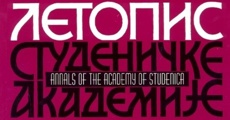| |
IN
VIVO STUDY
OF RADIOPROTECTIVE POTENTIAL OF FULLERENOL
Dobrić
S, *Đorđević A, Trajković S, **Bogdanović G, Milovanović Z, Dragojević-Simić
V.
Center
for Poisoning Control, Military Medical Academy, Belgrade, Serbia
and Montenegro
* Faculti of Science, Department of Chemistry, Unuversity of Novi
Sad, Serbia and Montenegro
** Institute of Oncology Sremske Kamenica, Sremska Kamenica, Serbia
and Montenegro
|
|
| |
ABSTRACT
In
vitro studies demonstrated fullerenols polyhydroxilated derivative
of fullerene (C60(OH)n
n = 12-26) high antioxidative potential. Since the radiation injury
is mainly a consequence of the action of free radical species, we
wanted to study the radio protective efficiency of fullerenol in
irradiated experimental animals. The aim of this study was to evaluate
the radio protective efficiency of fullerenol in whole body irradiated
mice. In our study, we used fullerenol C60(OH)22.
It was given in doses of 10 mg/kg and 100 mg/kg intraperitonealy
(i.p.), about 30 minutes before irradiation. Irradiation was performed
at linear accelerator SL 75-20 Philips, with X-ray energy of 8 MV.
Doses of radiation were from 6 Gy to 9 Gy. The whole-body irradiation
experiment was performed in mail, adult, white mice (20-25 g).The
survival rate of irradiated animals and body mass gain were monitored
during 30 days after irradiation. It was shown that fullerenol,
in doses given, failed to protect irradiated animals. Some mild
protective effect was observed when fullerenol was given in a dose
of 10 mg/kg i.p. |
|

